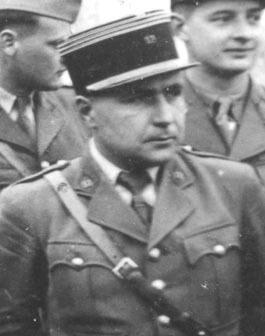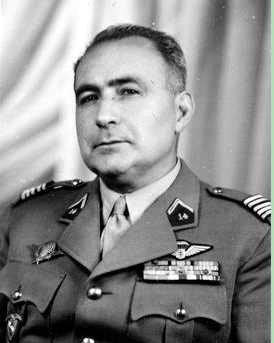Allegiance Free France France Service/branch French Airborne | Name Georges Berge | |
 | ||
Born 3 January 1909Belmont, Gers, France ( 1909-01-03 ) Died 15 September 1997 (1997-09-16) (aged 88)Mimizan, France Rank Brigadier general (1961) Commands held 1ere Compagnie de Chasseurs Parachutistes (1e CCP)French Squadron SAS14e Regiment d\'infanterie parachutiste de Choc (RIPC) | ||
Similar Pierre Billotte, Gabriel Brunet de Sairigné, Pierre Brossolette Years of service 1929–1930, 1933–1962 Battles/wars World War II, Suez Crisis, Algerian War Awards Commander of the Légion d'honneur, Companion of the Liberation, Grand Officier of the National Order of Merit, Croix de Guerre 1939-1945, Croix de la Valeur militaire, Officer of the Order of the British Empire (UK), Military Cross (UK), Commander of the Order of George I (GR) Nationality French | ||
Georges Roger Pierre Bergé (3 January 1909 – 15 September 1997) was a French Army general who served during World War II. He enlisted in the Free French Forces, where he took command of the 1re compagnie de chasseurs parachutistes (1st Parachute Chaser Company). He is mentioned by David Stirling as one of the co-founders of the Special Air Service (SAS). In Great-Britain and Egypt, he organised the training for Allied agents sent to France and led the first airborne mission in occupied France, named Operation Savannah. He fought in Syria and Crete. After his capture by the Germans he was imprisoned in Colditz Castle.
Contents
Youth

Georges Bergé was born ion January 1909 in Belmont, in the Gers département, France. He is drafted in 1929, and incorporated in the 24th infantry regiment in Mont-de-Marsan, where he is trained as a reserve officer. In April 1930, He was discharged from military service with the rank of second lieutenant. In 1933, he opted for a military career and joined the Infantry and Tanks School (l'école de l'Infanterie et des Chars) in Saint-Maixent. By 1934, he was promoted to the rank of lieutenant.
1940
1941
1942
His unit is tasked to attack enemy airfields in the mediterranean zone. Bergé chooses Heraklion airfield, Crete. With a group of four men, he manages to destroy 20 enemy planes.
19th. He is captured at the conclusion of his mission. He is imprisoned in XC Oflag in Lübeck, from which he tries to escape in vain.
1943
1945
Post war
Lieutenant-colonel Bergé is successively allocated to the Parachute inspection administration, to the military cabinet of the Provisional Government of the French Republic, to the National Defense' staff. He is then the military attaché for the French ambassy in Rome.
